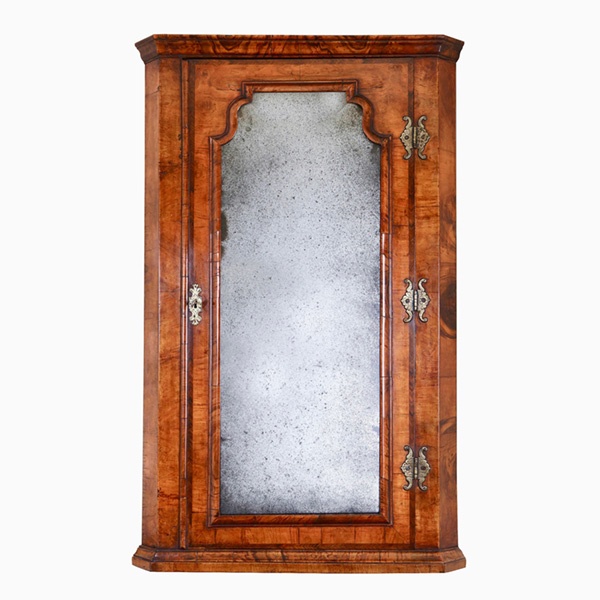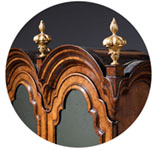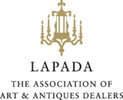Small Proportioned Elegant Portico Mantel Clock by Janvier, c. 1815
Sold
Request Information
Follow Us
Small Proportioned Elegant Portico Mantel Clock by Janvier, c. 1815
Antide Janvier (1751-1835) started his clockmaker’s life in Besançon, a clockmaker’s centre in eastern France, and ended up in Paris in 1784, where he grew to fame. He was the clockmaker of the king’s brother and was particularly interested in planetary clocks (there is one in the Museum of the History of Science, Oxford). He produced exquisite clocks which were widely purchased in France and abroad. However, he also produced more simple and elegant clocks which this is an example of.
The lovely four baluster pillar gilt-brass case has a cylindrical top to house the movement. It is surmounted on the corners by four vase-shaped finials, the top bearing a larger similarly shaped finial on a shaped base. The case rests on four gilt brass bun feet.
The circular 8cm enamel dial has a fine chapter ring with Roman hour numerals, red Arabic quarter-hour, five-minute and minute divisions. The time is indicated by a fine pair of blued-steel fleur-de-lys hands.
The extremely finely made spring-driven eight-day movement has a going train only, which has anchor escapement with the original short silk-suspended pendulum. It also has stopwork.
Condition
Good. Wear consistent with age and use.
Dimensions
Height: 9.06 in. (23 cm)
Width: 4.73 in. (12 cm)
Depth: 2.76 in. (7 cm)
Literature
Tardy, Dictionnaire des Horlogers Français, Paris, 1971, pp. 323-24
J.-D. Augarde, Les Ouvriers du Temps, Antiquorum, 1996, pp. 336.
PREVIOUSLY SOLD
No Results Found
The page you requested could not be found. Try refining your search, or use the navigation above to locate the post.
No Results Found
The page you requested could not be found. Try refining your search, or use the navigation above to locate the post.
YOU MAY ALSO LIKE

Queen Anne Walnut Corner Cupboard with Bevelled Mirror Plate
A truly remarkable find in original condition. To the door a shaped soft bevelled mirror plate is framed by a cross-grain molding of typical queen Anne design which is further cross-banded, feather-banded and edged to the opening with a single de-molding.

Queen Anne Walnut Corner Cupboard with Bevelled Mirror Plate
A truly remarkable find in original condition. To the door a shaped soft bevelled mirror plate is framed by a cross-grain molding of typical queen Anne design which is further cross-banded, feather-banded and edged to the opening with a single de-molding.






